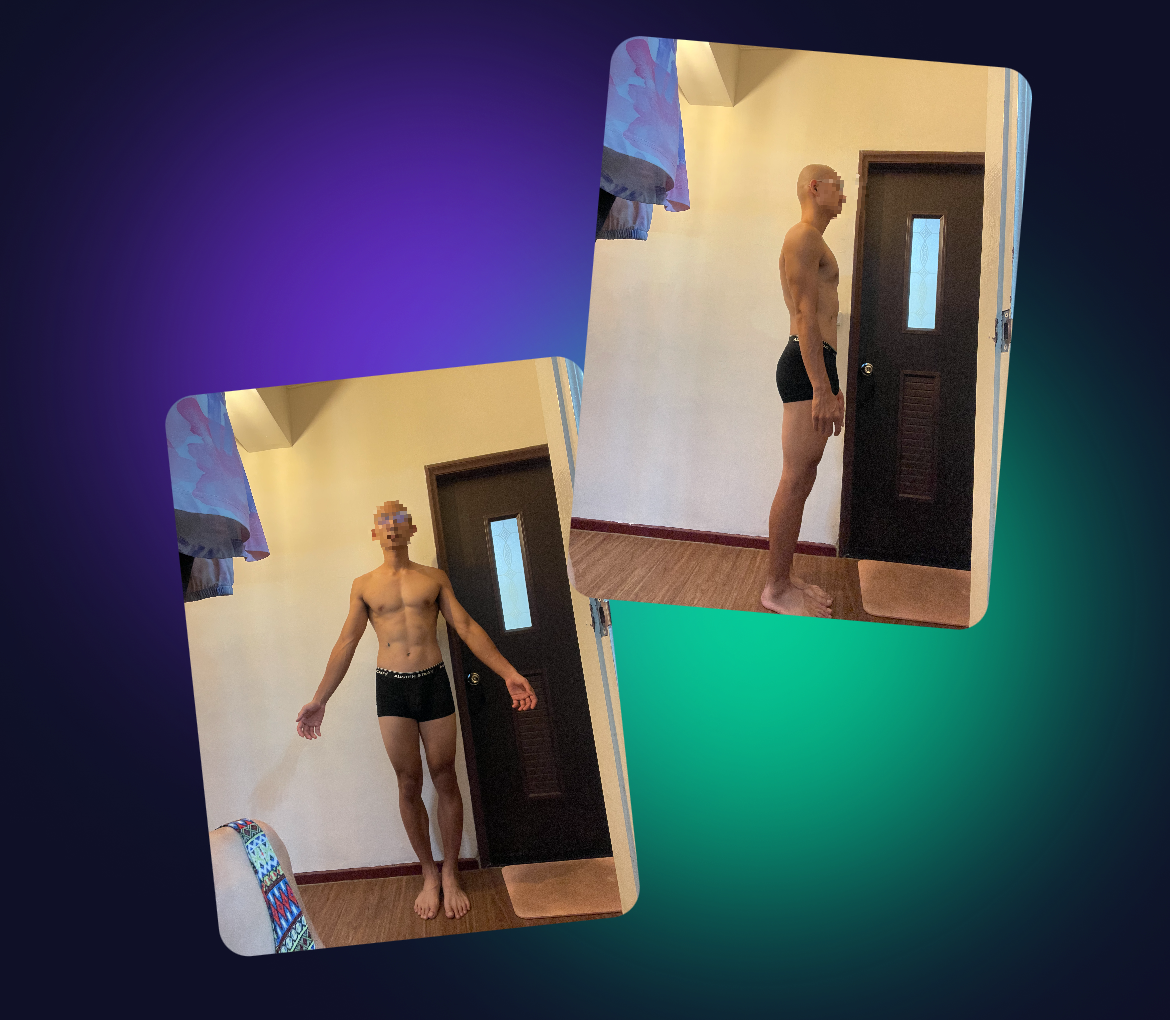利用AI測量身體組成–Spren
【本篇文章無任何業佩行為】
喜歡健身的人,多少都有定期測量身體組成的習慣。無論好的或壞的,看著自己各項數據的曲線,總可為過去幾個月的努力下點結論。
不過,操作這份報表的背後動機,有些人可能單純因為外貌使然,有些人卻是為了生存。
許多研究已經顯示,無論是在腫瘤學還是非腫瘤學的患者中,身體組成與存活結果有關。尤其在腫瘤學中,肌少症已經與多種惡性腫瘤的不良預後密切相關。[1-7]
肥胖也與慢性疾病有關,但若僅使用BMI有其侷限性,例如,一名健美選手可能體重破百,但卻充滿肌肉量。最近的證據顯示(8),高脂肪重量(fat mass, FM)和去脂體重(fat-free mass, FFM)與死亡風險增加獨立相關。因此肌肉量與脂肪量同樣重要。身體組成的量測是治療上在預後的得力助手。
因此,無論是體適能還是醫療產業,身體組成測量一直是非常熱門的話題。
測量身體組成的方法眾多。圖片來源: 《內科學誌》生物阻抗分析於內科學之應用
但過去使用的黃金標準(例如,DEXA、MRI、CT…等),一直都存在時間、人力、空間上的不方便性。也因此相關替代性的產品不斷推陳出新,總希望來分食這塊大餅。
時光飛逝,彷彿還是昨日各種研究還在讚嘆使用生物阻抗是如何取代黃金標準,讓民眾不必到醫院也可以測量身體組成;今天,我們已經可以只靠一隻智慧型手機的鏡頭,使用AI來計算你的體脂肪與肌肉量。
Spren是一款使用AI計算身體組成的APP
Spren是我近期接觸到的一款APP,正是使用AI和你的相機鏡頭來幫你量測身體組成的新穎產品。只需要兩張照片(正面、側面)就能提供你多項數據。
認識到Spren之後,我才驚覺原來AI的影響力也開始顛覆我的工作了。但由於整段過程精簡到太不可思議,因此我也開始找尋相關資料,想了解這類型產品的信效度有多高。
隨著找尋的過程,我發現原來AI早在幾年前就已經開始協助電腦斷層,幫忙進行判斷身體組成的工作了。也發現原來2020-21年左右,Amazon就曾推出類似的產品–HALO。
(可參考Amazon的產品文章,內有這項產品的原理說明)
基本上,這類視覺識別法(Visual body composition assessment methods)的原理,就是將影像去比對龐大的資料庫,再透過計算預測。這跟過去測量身體組成使用直接測量法(DEXA、生物電阻…等)有很大不同。
在HALO推出之後,也有關於他的信效度研究(9)。基本上,結論就是可以安心使用。不過也有研究(10)發現,估計值會根據性別和種族有所變化。
可惜Amazon似乎難以在這項專案上損益兩平,已於今年將其部門關閉了。(相關新聞: https://www.ithome.com.tw/news/156605)
但Spren的功能就跟HALO的身體組成量測功能一樣。使用者須輸入自己的身高與體重,提供push up的最大次數、5公里的平均速度讓機器參考,再透過架設攝影機,拍攝正面與側面照,即可得到最後結果。
進入Spren主畫面的功能與原理介紹,其中包含隱私權的部分。
APP會自動幫你開啟手機前鏡頭。手機高度須放置在大腿一半的高度,距離1-2公尺,開啟擴音聽從指示。
拍照姿勢正面照為雙腳併攏,雙手打開45度。直到AI將關節點都抓出來,呈現綠燈為止。拍照時不要穿著寬鬆衣物。
拍攝完成之後,交由機器計算約一分鐘,就可以看到各項數據,並可以印出PDF報表。
Spren的出現,對教練來說不一定要照單全收,但至少我們又多了一個選擇工具,而且他目前是免費的,未來是否需要付費還不清楚。
想想你有多少次問你的選手(特別是學生運動員):「你目前的體脂率是多少」,他們告訴你他不知道?這時候你可以拿出Spren直接幫他測量,而且還能順便儲存當下的照片(APP會自動在臉部馬賽克),方便之後製作before/after的對照圖。
不過值得注意的是,如果需要使用Spren APP,需先到官網註冊填寫問卷,他們會再寄送通行碼(access code)至你的信箱。取得通行碼之後才有辦法使用APP。
我個人的經驗,從寄出要求到收到通行碼大約需要一天的時間。不過因為當時不知道何時會收到回信,所以有先使用了別人提供的通行碼,一樣可以使用。如果想試試看這款APP的讀者也可使用我得到的通行碼–partnerfree。
看來未來AI這股洪流,體能教練也將躬逢其盛。不過我不認為AI的出現能夠取代教練的工作;相反地,我認為會有越來越多高效率的產品出現,能不能妥善運用這些工具以及正確看待它帶來的數據,則有賴每位教練的智慧。
REFERENCE
Brown, J. C., Cespedes Feliciano, E. M., & Caan, B. J. (2018). The evolution of body composition in oncology-epidemiology, clinical trials, and the future of patient care: facts and numbers. Journal of cachexia, sarcopenia and muscle, 9(7), 1200–1208. https://doi.org/10.1002/jcsm.12379
2. Kamarajah, S. K., Bundred, J., & Tan, B. H. L. (2019). Body composition assessment and sarcopenia in patients with gastric cancer: a systematic review and meta-analysis. Gastric cancer : official journal of the International Gastric Cancer Association and the Japanese Gastric Cancer Association, 22(1), 10–22. https://doi.org/10.1007/s10120-018-0882-2
3. Baracos, V. E., Reiman, T., Mourtzakis, M., Gioulbasanis, I., & Antoun, S. (2010). Body composition in patients with non-small cell lung cancer: a contemporary view of cancer cachexia with the use of computed tomography image analysis. The American journal of clinical nutrition, 91(4), 1133S–1137S. https://doi.org/10.3945/ajcn.2010.28608C
4. Hopkins, J. J., Skubleny, D., Bigam, D. L., Baracos, V. E., Eurich, D. T., & Sawyer, M. B. (2018). Barriers to the Interpretation of Body Composition in Colorectal Cancer: A Review of the Methodological Inconsistency and Complexity of the CT-Defined Body Habitus. Annals of surgical oncology, 25(5), 1381–1394. https://doi.org/10.1245/s10434-018-6395-8
5. Trestini, I., Carbognin, L., Monteverdi, S., Zanelli, S., De Toma, A., Bonaiuto, C., Nortilli, R., Fiorio, E., Pilotto, S., Di Maio, M., Gasbarrini, A., Scambia, G., Tortora, G., & Bria, E. (2018). Clinical implication of changes in body composition and weight in patients with early-stage and metastatic breast cancer. Critical reviews in oncology/hematology, 129, 54–66. https://doi.org/10.1016/j.critrevonc.2018.06.011
6. Peng, Y. C., Wu, C. H., Tien, Y. W., Lu, T. P., Wang, Y. H., & Chen, B. B. (2021). Preoperative sarcopenia is associated with poor overall survival in pancreatic cancer patients following pancreaticoduodenectomy. European radiology, 31(4), 2472–2481. https://doi.org/10.1007/s00330-020-07294-7
7. Lin, T. Y., Peng, C. H., Hung, S. C., & Tarng, D. C. (2018). Body composition is associated with clinical outcomes in patients with non-dialysis-dependent chronic kidney disease. Kidney international, 93(3), 733–740. https://doi.org/10.1016/j.kint.2017.08.025
8. Abramowitz, M. K., Hall, C. B., Amodu, A., Sharma, D., Androga, L., & Hawkins, M. (2018). Muscle mass, BMI, and mortality among adults in the United States: A population-based cohort study. PloS one, 13(4), e0194697. https://doi.org/10.1371/journal.pone.0194697
9. Graybeal, A. J., Brandner, C. F., & Tinsley, G. M. (2023). Validity and reliability of a mobile digital imaging analysis trained by a four-compartment model. Journal of human nutrition and dietetics : the official journal of the British Dietetic Association, 36(3), 905–911. https://doi.org/10.1111/jhn.13113
10. Graybeal, A. J., Brandner, C. F., & Tinsley, G. M. (2022). Visual body composition assessment methods: A 4-compartment model comparison of smartphone-based artificial intelligence for body composition estimation in healthy adults. Clinical nutrition (Edinburgh, Scotland), 41(11), 2464–2472. https://doi.org/10.1016/j.clnu.2022.09.014






